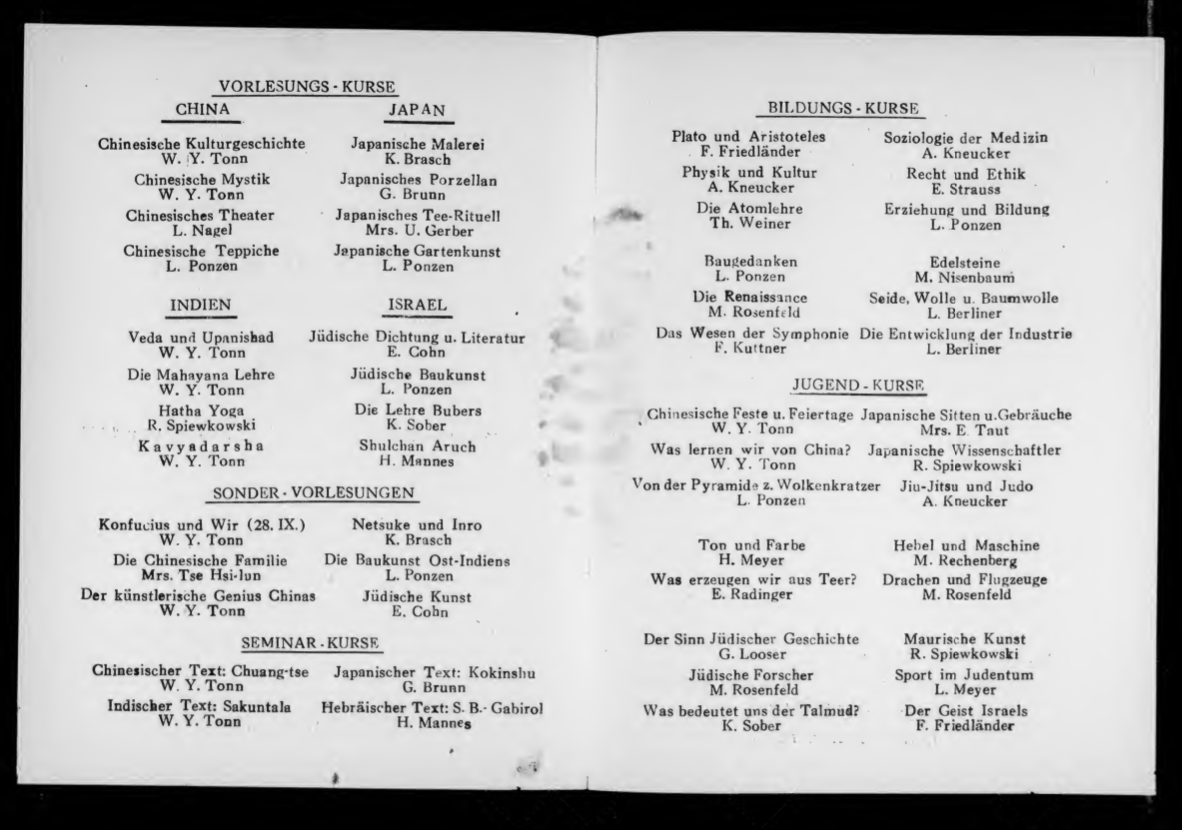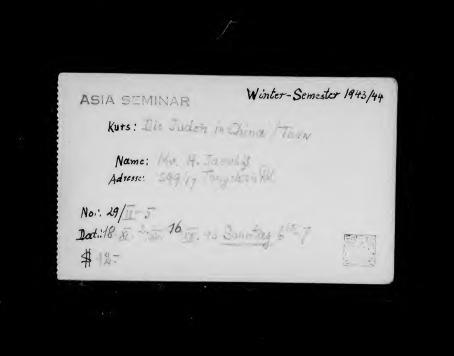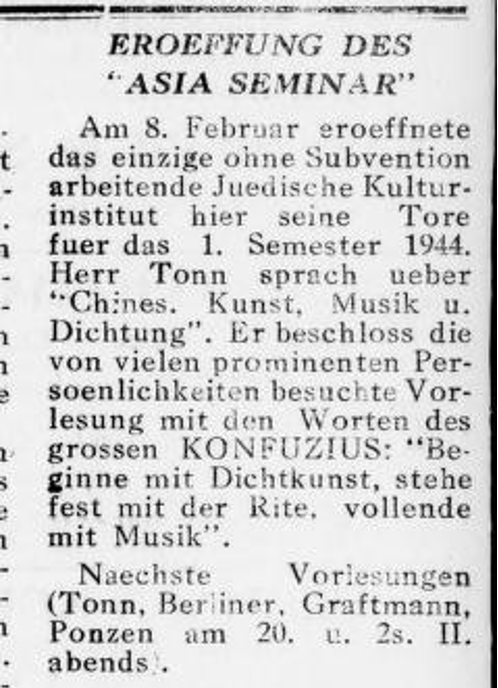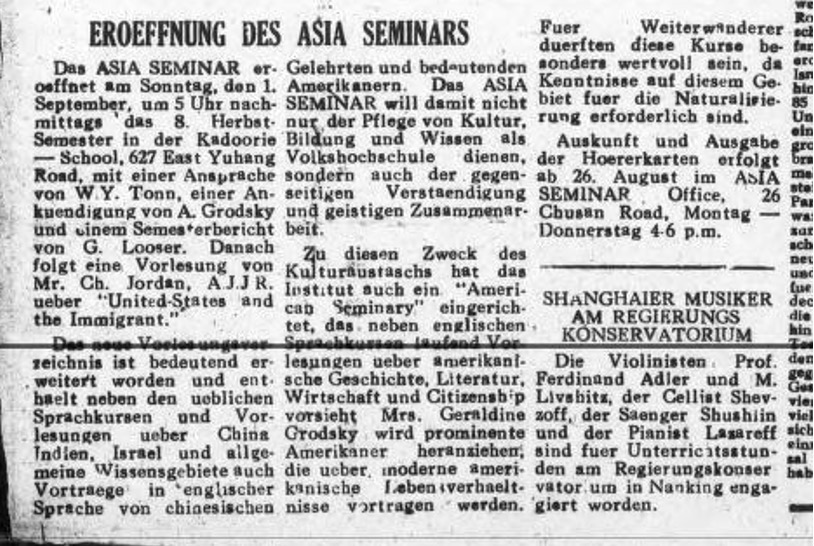Archive
Asia Seminar
- Asia Seminar
Willy Tonn's Asia Seminar
- University / Higher Education Institute / Research Institute
The Asia Seminar was run by the scholar Willy Tonn (1902–1945), who founded it in 1943 and enriched the cultural and scholarly life in the so-called Shanghai Ghetto during the harsh wartime period.
Word Count: 31
Shanghai Jewish Youth Association, 627 East Yuhuang Road, (Hongkou (now Dongyuhang Lu, Hongkou Qu) Shanghai

Portrait of Willy Tonn, painting by Hans Jacoby, photography, Hans Jacoby Collection (© Leo Baeck Institute, New York). 
Hans Jacoby, Portrait of Bao Bao, oil on canvas, 60.2 x 50 cm around 1940 [probably 1943 or later], Shanghai, Hans Jacoby Collection (© Leo Baeck Institute, New York). 
Asia Seminar, programme, winter semester 1943/44, Hans Jacoby Collection, Box 1, Folder 5 (© Leo Baeck Institute, New York). 
Asia Seminar, card of Hans Jacoby, winter semester 1943/44, Hans Jacoby Collection, Box 1, Folder 5 (© Leo Baeck Institute, New York). 
“Eroeffnung des ‘Asia Seminar’.“Juedisches Nachrichtenblatt, 18 February 1944, vol. 5, no. 7, p. 5. 
“Eroeffnung des Asia Seminars.” Shanghai Echo, 25 August 1946, p. 7. Ebner Irene. Jewish Refugees in Shanghai 1933–1947. A Selection of Documents. Archiv jüdischer Geschichte und Kultur. vol. 3, Vandenhoeck & Ruprecht, 2018.
Freyeisen, Astrid. Shanghai und die Politik des Dritten Reichs. Königshausen & Neumann, 1999.
Kranzler, David. “Restrictions Against German-Jewish Refugee Immigration to Shanghai in 1939.” Jewish Social Studies, vol. 36, no. 1, 1974, pp. 40–60.
Pan, Guan. A Study of Jewish Refugees in China (1933–1945). Histories, Theories and the Chinese Pattern. Shanghai Jiao Tong University Press/Springer, 2019.
Walravens, Hartmut. “Martin Buber und Willy Tonn und ihre Beiträge zur Kenntnis der chinesischen Literatur.“ Monumenta Serica, 1994, vol. 42, 1994, pp. 465-481.Word Count: 91
Leo Baeck Institute, New York, Willy Tonn Collection.
Word Count: 8
- Shanghai
- Mareike Hetschold. "Asia Seminar." METROMOD Archive, 2021, https://archive.metromod.net/viewer.p/69/2952/object/5145-11786445, last modified: 14-09-2021.
-
Hermann SchieberthPhotographerArt dealerShanghai
Hermann Schieberth was a successful photographer who had two studios in Austria (from 1909/10? onwards): one in Vienna and the other in Kaltenleutgeben. Due to his Jewish background he had to flee in 1938 and arrived in Shanghai in 1939.
Word Count: 37
Hans JacobyArtistShanghaiHans Jacoby fled in 1938 to the Netherlands, where he was interned by the Dutch government in Hook of Holland. He was able to leave the camp and arrived, together with his wife Emma Jacoby, in Shanghai in 1940 where he continued to work as an artist.
Word Count: 45